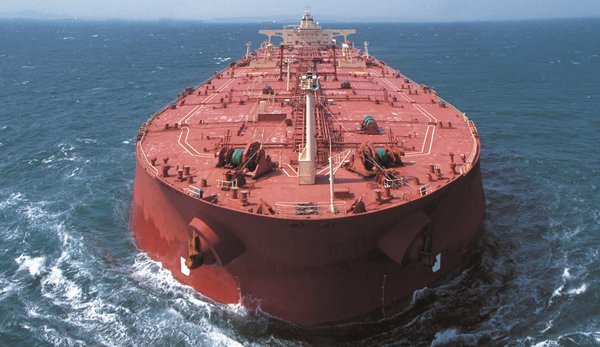An autumn of discontent? The Saudi Arabia energy attacks in context

MSI maintains a broadly positive outlook for large oil tankers, but the overall effect of higher oil prices on the global economy is negative, writes Tim Smith.
Global oil markets have been rocked by the attacks on Saudi Arabian oil infrastructure in mid-September and amid a summer of escalating tensions in the Middle East, these attacks represent a significant escalation in terms of scale and severity.
However understanding their implications requires reading beyond the headlines. As of w/c 16 September, Saudi Arabia is reportedly already be close to restoring about 70% of the outage with a full restoration within 2-3 weeks (Reuters, September 17).
Further updates from the Saudi government are imminent, but should this timescale be met, the impact is likely to be limited on the physical market. However, regional tension and risk of wider conflict has grown. This will not be dispelled in weeks, implying potential for elevated oil prices which would be to the detriment of underlying tanker demand and earnings, particularly given fragile macroeconomic conditions.
The knock-on effect for an already vulnerable global economy from the attacks is going to be negative. However, although oil prices spiked in the immediate aftermath, levels have remained within the 2019 range. Higher oil prices will reduce underlying demand growth and increase the existing risks from trade wars etc. in deterring investment and undermining sentiment in the global economy.
Global oil demand growth outlook in the 1.0-1.5% yoy range is at risk, and should we see consumption growth materially below this it will present a risk to our view of further upside. Our near-term forecast for earnings remains positive, based on higher global refinery throughput, and the build-up to IMO 2020 and a benign fleet growth outlook.
Tanker sectors in focus
VLCC spot earnings increased in the immediate aftermath of the attack, but gains were limited and MSI has largely retained our market outlook with improvements across the remainder of 2019 and into Q1 20.
October will provide the key test for both the ability of Saudi Arabia to recover production and exports, and for the tanker market to push higher in Q4. Meanwhile the refinery throughput cited by many as supporting employment in H2 19 is emerging with gains in the US. Aframaxes in the Atlantic basin have seen notable spot improvements in September.
Near-term uncertainty and supply shortages could support spot market volatility – the immediate reaction has been an increase in TD3C spot TCE to about $35 k/Day. Saudi Arabia has assured Asian buyers on volumes but Unipec has quickly chartered vessels bringing US crude. Immediate needs are likely to outweigh trade tensions; as such expect more US flows back into China.
We have become slightly more cautious on near-term spot VLCC earnings. In November we expect TD3C earnings at $28,000 a day – but don’t yet view the Saudi attacks as a game changing event for our outlook.
The overall trajectory of our forecast remains positive – dependent on a restoration of Saudi production quickly – a prolonged recovery represents a major downside risk to our spot market forecast and the wider view of improving tanker markets going into 2020.
Suezmaxes may benefit from the Saudi disruption. Russia is likely to view the Saudi situation as an opportunity and exports may increase as a result. Reduced VLCC demand in the Middle East is likely to drive the larger vessels to ballast into the Atlantic, potentially putting pressure on West African markets.
Suezmax cargoes from the US comprise a significant volume, but as US crude exports have grown, the overall volume of Suezmax cargoes hasn’t changed much, meaning their share has dropped. We estimate that Suezmaxes carried 27% of US crude exports in 2018 – in the period January-July 2019 this was down to 20%.
The situation in Saudi Arabia is going to have effects across the entire oil and tanker market, but of the major crude-carrying segments, Aframaxes are arguably the best insulated. The Caribs market has recovered, with higher US crude imports increasing lightering activity, helping absorb surplus tonnage from the loss of Venezuela-US cargoes. Aframaxes are also moving a lot of US crude, servicing routes to Europe which have been growing.
Products and IMO 2020
While the attacks potentially push underlying oil prices up further and heighten fuel price spreads the knock-on impacts to fuel supply related to IMO2020 will be dependent on the recovery in production.
The Saudi production outages will have a mixed effect on product tankers. The loss of refining throughput associated with gas production outages will drive up product imports. However, Saudi product exports will contract. With surplus production in China we may see more backhaul cargoes becoming available from stocks in e.g. Singapore for large product tankers.
Europe is expected to take in more Asian gasoil as we approach IMO 2020. Europe has increased its imports of Saudi diesel in recent years but this will now likely contract in the near-term. This year Europe has been taking in more diesel from India and Singapore – about 2m tonnes in H1 from negligible levels in 2018. Arbitrage spreads were widening in early September and are likely to support higher volumes.
We view this as positive for larger product tankers, particularly as VLCC deliveries ease from levels seen earlier this year, reducing the impact of newbuilds moving clean cargoes east-west. Our outlook sees overall improvement in spot markets across the sector. Recent weakness in earnings is expected to recover with US-Europe gasoil trade also increasing across Q4.
